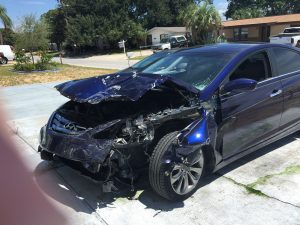Every year there are millions of people who are injured in personal injury accidents – on the road, at work, at home or outdoors. And more often than not, they are not at fault for these mishaps, in which case they deserve to be compensated for their agony and loss. Personal injury claims help these victims to achieve this compensation. But before deciding on going about a personal injury claim, how will you evaluate if your claim is worth pursuing? The answer to this key question lies in ‘Damages’. So what are damages? What are the different types of damages? How do you evaluate these damages?
1. Compensatory Damages:
When it comes to personal injury claims, most damages would fall under the category of compensatory damages. Compensatory damages are damages that can be evaluated and monetarily compensated. While it is easy to put a value on some compensatory damages like medical expenses, loss of property etc., it is difficult to put a value on the pain that one has suffered because of the accident. These loses can be categorized as monetary and non-monetary losses.
i. Monetary losses:
Losses that can be easily evaluated and put a price on are called monetary losses. They are relatively easy to calculate based on evidence or indications such as cost of medical treatment, value of property etc.
• Medical expenses:
Almost all claims will cover medical expenses as damages as it is imperative that an injured victim is treated for the injury suffered due to the accident. It not only covers the cost of treatment that the patient already has incurred, but also covers such costs that the patient will be required to incur in future for the rest of his/her life.
• Loss of income:
If the accident has resulted in loss of income for the victim then they can claim damages for the same. It not only covers the income that the victim has already lost because of the accident, but also will cover his/her future income as can be calculated. This is termed as ‘loss of earning capacity”.
• Loss of property:
If the accident resulted in the loss of a physical property such as vehicle or any other item of value, then it can be covered as damages. The value can be calculated based on the cost of repair or fair market value in case of irreparable damages.
ii. Non-monetary losses:
Losses that are physical and emotional and that cannot be easily evaluated are called non-monetary losses. It is difficult to put a value on non-monetary losses and it may considerably vary between victims.
• Pain and suffering:
Most personal injuries involve pain and discomfort and it is imperative that the damages cover this suffering. The damages will cover compensation for physical pain endured during the accident and also during the recovery phase.
• Emotional distress:
Damages will also cover the psychological impact of the injury. This includes anger, fear, loss of sleep, anxiety, frustration etc. that is associated with the injury.
• Loss of enjoyment:
If the injury resulted in the victim’s loss of interest and enjoyment in life such as hobbies or other recreational activities, the damages can cover this.
• Loss of consortium:
Loss of consortium is provided to the spouse who is affected because of the victim’s inability to indulge in the relationship. It includes loss of companionship, loss of affection, loss of sexual relations etc. Traditionally, these types of damages are lightly compensated.
2. Punitive damages:
Punitive damages are intended to punish the defendant for their outrageously careless act that resulted in the injury in the first place. Punitive damages are awarded on top of compensatory damages and are designed to provide some kind of emotional closure to the victim. They can act as deterrents in future. However, punitive damages are not awarded in all personal injury cases and they are reserved for serious acts. Also most states have a limit to the amount that can be claimed as punitive damages to avoid excessive claims on this account. Some common examples of punitive damages are injuries that result from reckless or wanton behavior such the Defendant injuring the Plaintiff in a DUI or a wrongful death case when the Defendant had knowledge of the danger and took no steps to correct same.
It is imperative to be aware of the different damages that one can claim for a Clearwater auto accident lawyer or a Miami personal injury attorney. Also it is important to ensure that the claimant is not negligent on actions that they have to take, in order to mitigate the impact after the accident, as this will have a bearing on the damages awarded.
Continue reading
 Tampa Bay Criminal Defense Lawyer Blog
Tampa Bay Criminal Defense Lawyer Blog



